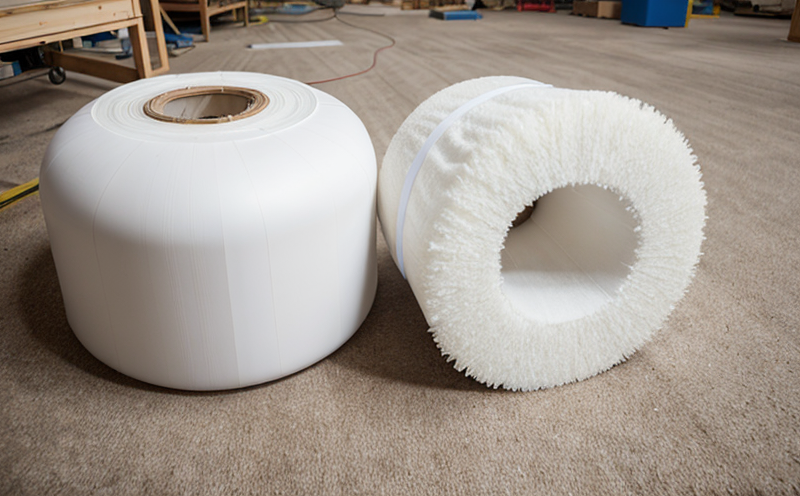ASTM C423 Sound Absorption Testing of Materials
The ASTM C423 standard practice provides a standardized method for determining the sound absorption coefficients of materials using the reverberation room technique. This test is critical in acoustics, vibration, and noise testing as it assesses how well a material absorbs sound energy, thereby reducing noise pollution and enhancing indoor acoustic environments.
The reverberation room method involves placing the specimen in an enclosed space where sound waves are generated and then measured after they have been absorbed by various materials. The absorption coefficients calculated from this test help determine the effectiveness of different insulation materials in controlling sound propagation. This service is essential for industries ranging from construction to automotive, ensuring that products meet stringent acoustic performance requirements.
The ASTM C423 procedure specifies detailed steps and considerations necessary to ensure accurate measurements, including specimen preparation, room setup, and data analysis techniques. Specimens are typically cut into standard sizes (e.g., 150 mm x 150 mm), mounted on a rigid backing, and placed in the reverberation room for sound absorption testing.
The test process involves generating sound waves within the room and measuring the sound energy reflected back to the source after it has encountered the specimen. The difference between the initial incident sound level and the reflected sound level provides information about the absorbed sound power. The absorption coefficient is calculated as a ratio of these two values, expressed in decibels per square meter.
To ensure reliable results, the reverberation room must meet specific criteria outlined by ASTM C423, including room dimensions, material properties, and air quality requirements. Compliance with these standards guarantees accurate measurements, which are vital for meeting regulatory requirements and achieving desired acoustic performance in various applications.
The importance of ASTM C423 testing extends beyond mere compliance; it plays a crucial role in optimizing the design of buildings and vehicles to enhance sound insulation and comfort levels. For instance, in construction projects, selecting appropriate materials based on their absorption coefficients can significantly reduce noise transmission through walls and floors. In automotive applications, this test helps engineers choose materials that improve passenger cabin acoustics.
Understanding the nuances of ASTM C423 testing also aids researchers and developers in innovating new acoustic solutions. By leveraging advanced materials science knowledge, they can create more effective sound barriers or enhance existing ones. This service not only supports regulatory compliance but also drives innovation by providing insights into material behavior under various acoustic conditions.
Accurate ASTM C423 testing requires precise equipment and skilled personnel to ensure reliable results. Our laboratory adheres strictly to the procedures outlined in this standard, ensuring that clients receive trustworthy data they can rely on for making informed decisions about their materials selection processes.
Benefits
- Achieves precise sound absorption measurements necessary for compliance with relevant standards.
- Promotes the development of innovative materials that enhance acoustic performance.
- Ensures accurate data for informed decision-making in material selection processes.
- Saves time and resources by providing reliable results faster than alternative methods where applicable.
Industry Applications
The ASTM C423 sound absorption testing finds application across numerous industries, particularly those concerned with acoustic performance. Construction firms rely on this service to select materials that effectively reduce noise levels in residential and commercial buildings. Automotive manufacturers use it to improve the sound quality within vehicle interiors by selecting appropriate insulating materials.
Additionally, aerospace companies utilize ASTM C423 testing to ensure quieter cabin environments for passengers aboard aircraft. Furniture makers also benefit from this service as they can incorporate superior acoustic properties into their products, attracting environmentally conscious consumers who value sustainability and comfort.
Environmental and Sustainability Contributions
ASTM C423 sound absorption testing contributes significantly to environmental protection by promoting the use of sustainable materials that reduce noise pollution. Lowering ambient noise levels helps mitigate stress on wildlife, improves human well-being, and fosters healthier living spaces.
The test supports sustainability initiatives by encouraging the development and adoption of eco-friendly products that perform excellently in terms of acoustic insulation without compromising environmental responsibility. This aligns with global efforts towards reducing carbon footprints and fostering greener economies.





